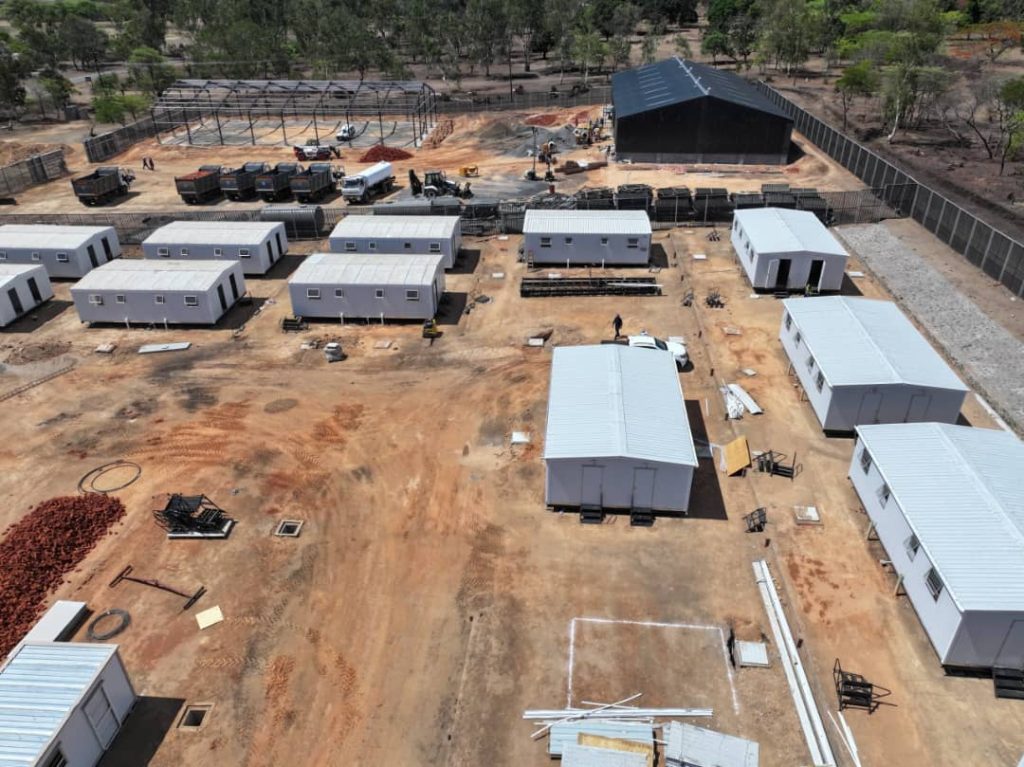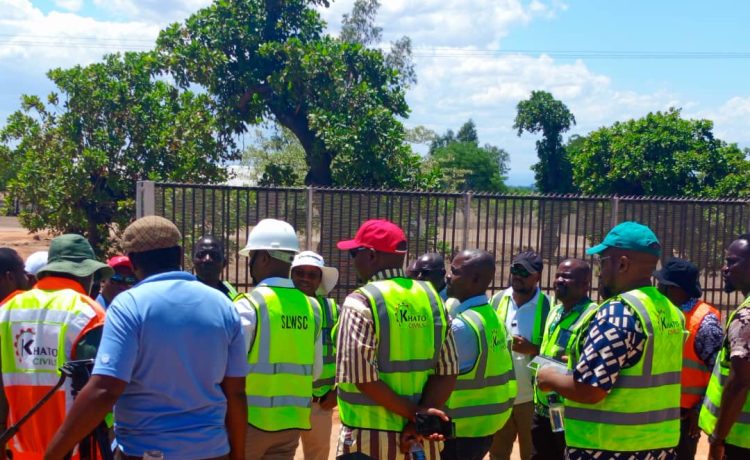Government stakeholders in the Salima/Lilongwe Water Supply project today made a site visit to the ongoing project. The tour which attracted stakeholders including the Reserve Bank of Malawi, Ministry of Finance, Ministry of Water and Sanitation, Central Region Water Board, and Lilongwe Water Board, along with representatives from New Building Society (NBS) Bank, was prompted by the necessity to evaluate the current progress of the project and to address funding requirements as the initiative progresses.
Principal Secretary of the Ministry of Water and Sanitation, Elias Chimulambe, underscored the visit’s purpose, stating, “The site tour was triggered by the requirement to appreciate the project progress as government makes periodic payments.” He explained that project funds are released by the government in instalments to facilitate scheduled construction activities by the contractor.
The Salima/Lilongwe project is contracted to Khato Civils in collaboration with Zambezi Engineering under an Engineering, Procurement, and Construction (EPC) model. This comprehensive contract requires the contractor to manage all aspects of the project, from conducting environmental impact assessments to ensuring the delivery of potable water directly to households. However, the Malawi Government is tasked with addressing the needs of individuals whose land is affected by the initiative, including relocation and compensation.
Current assessment reports indicate that while the Engineering phase of the project is fully completed, the procurement component stands at 80%. On-site, machinery including concrete batch plants, excavators, construction vehicles and other yellow plant have been procured to satisfy the project, with pipes designated for water transport still pending delivery, despite procurement being finalized.
Significant construction materials, such as rebar for concrete structures, formwork, steel coils for pipes, and concrete mixture ingredients, have already been secured. According to the project’s planned timeline, the construction phase—encompassing the installation of reservoirs, pumping stations, and trenching for pipe laying—is projected to kick off in May, allowing affected farmers time to harvest their crops before relocating.
Stakeholders expressed satisfaction with the project’s trajectory. “We are happy with the manner the project is progressing according to schedule,” remarked one of the visiting officials. Compensatory measures have been implemented for those whose land is impacted, with ongoing commitments to facilitate their upcoming relocations. Representative from the contractor added, “Our project timeline considered these factors, allowing for crop harvesting prior to required relocations.”

Chief Financial Director of Khato Civils, Pryde Phiri, provided further insights into the project, detailing the strategic layout of the water transmission route which will include three pumping stations; each equipped with at least two circular concrete reservoirs, boasting a water holding capacity of five million cubic meters per station. Notably, the pumping stations will connect to a dedicated power grid to be constructed by Escom, alongside supplementary solar power plants and diesel generators to ensure a reliable energy supply in case of outages.
Phiri noted, “This is a critical arrangement to ensure undisturbed water supply throughout the channel.” He also highlighted the comprehensive environmental impact assessment, carried out by Nemus—a consulting firm from Portugal.
The engineering component of the project also encompasses essential tasks such as detailed geological surveys and hydrographic surveys among others. These assessments have played a crucial role, informing the placement of piping and providing insights into required corrosion resistance measures. Tino Mawanza, the project’s technical lead engineer, emphasized that careful mapping helps in identifying optimal water depths to achieve sustainable outlets.
Despite the evident progress, financial sustainability remains a concern. Phiri revealed that the contractor has already exceeded the government’s funding, having spent over $81 million against the $50 million received thus far. “We are happy with the project’s progress, but we urgently need sustainable funding to maintain our cash flow,” he urged. “The government needs to catch up on payments to ensure the project continues on schedule.”













